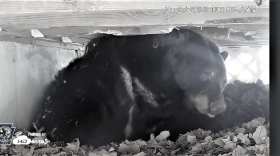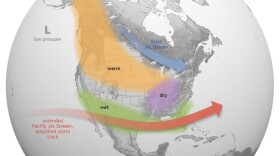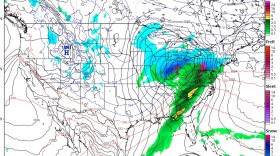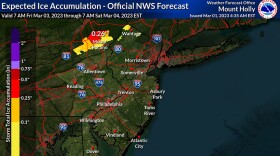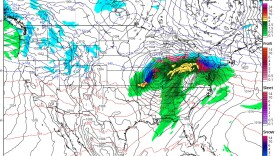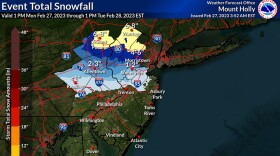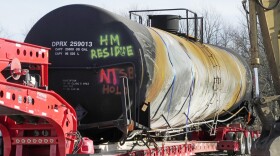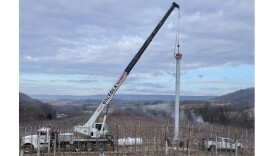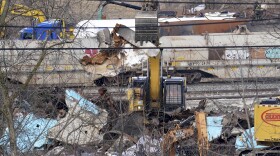-
A mother bear and her cubs are nestled under the deck of a Pike County home, and you can peek in on them 24/7. The camera is expected to be up until late March or early April, when the bears leave the den.
-
Based on history alone, fans of winter should be optimistic. But El Niño doesn't just affect one season, and scientists warn its possible return is a major cause for concern. Here's what we know so far.
-
The Pennsylvania Department of Environmental Protection lifted a drought watch for five counties, including Northampton County.
-
The rule was published earlier this month and applies to all 3,117 water systems. Both chemicals belong to the group of perfluoroalkyl and polyfluoroalkyl substances, known collectively as PFAS, which are used in products such as nonstick cookware, carpets, firefighting foam and fast-food wrappers.
-
A winter weather advisory remains in effect until 4 p.m. Wednesday, with snow coming down in a predicted burst across much of the Lehigh Valley.
-
The Palmer Township supervisors rejected a proposal for a 185,000-square-foot manufacturing center near a housing development in the northern end of the township.
-
The Lehigh Valley Planning Commission's comprehensive planning committee gave preliminary approval for a warehouse development in Upper Saucon Township and a recycling plant in Plainfield Township.
-
A storm system is forecast to approach the Lehigh Valley on Wednesday and bring with it a variety of wintry hazards, prompting the National Weather Service to issue a winter weather advisory.
-
A complex storm system is taking aim at the Lehigh Valley on Wednesday, and the midweek event could bring an extended period of snow to the area. But forecasters caution the "warm nose" of the storm could spoil the event for some.
-
With all the precipitation that's fallen — 5.86 inches since Dec. 1 — we could've been buried under 58+ inches of snow so far this winter. But those storm systems haven't had much cold air to interact with, and it's made all the difference.
-
The meteorological winter of 2022-23 is now in the books as the 7th warmest on record in the Lehigh Valley, but a potent storm system is heading this way.
-
Forecasters say another system will target the Mid-Atlantic region on Friday, and it will likely bring another shot of frozen precipitation to the area.
-
Lower Saucon Township residents opposing the landfill expansion who received party status are permitted to ask questions of witnesses, present evidence, make arguments, and are allowed to participate in an appeal.
-
Our daily list of useful information, chosen to inform and enhance your day, includes news you can use and then some!
-
The National Weather Service issued a winter weather advisory starting Monday night into Tuesday morning for the Lehigh Valley region. Hazardous conditions could affect the Monday afternoon and Tuesday morning commutes, according to the advisory.
-
Shipments of contaminated waste from the site of a fiery train derailment earlier this month in eastern Ohio near the Pennsylvania state line will resume Monday.
-
Scholl Orchards installed towering wind machines on its land in Kempton, Berks County, in a battle to ward off frost. It's necessary with warming winters to protect the trees from damage.
-
In October, months before the East Palestine derailment, the company also directed a train to keep moving with an overheated wheel that caused it to derail miles later in Sandusky, Ohio.
-
An unseasonably warm winter has people thinking their pollen allergies are already acting up. But other temperature-related causes can trigger allergy-like symptoms.
-
As the weather warms, there have been more reports of ticks in the Lehigh Valley. An expert explains why and how to protect yourself.
-
Some Pennsylvanians in Beaver County who live within or just beyond the evacuation area near the site of the train derailment are worried about the long-term effects of the event.
-
In the aftermath of the derailment, which released toxic chemicals into the streams and air around East Palestine, many are wondering how the country’s regulations around rail traffic could have allowed a train with 20 cars of hazardous material not to be considered a “high hazard.”


